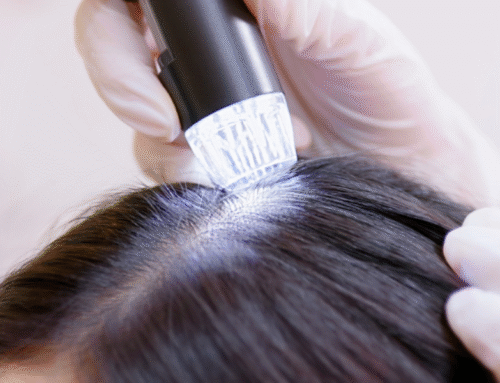Imagine waking up every morning and noticing your hair losing strength or discovering small bald patches on your scalp. If you live with alopecia areata, you know how challenging it can be to care for your hair and maintain scalp health. But is there a specific hair care routine that can help protect your scalp and encourage hair growth? Here, we tell you everything you need to know.
Why Is a Proper Hair Care Routine Important for Alopecia Areata?
Alopecia areata is an autoimmune condition where the immune system mistakenly attacks hair follicles, causing hair loss in localized areas. An adapted hair care routine not only protects the scalp but also creates an environment conducive to stimulating hair growth and strengthening the follicles.
Key Elements of a Hair Care Routine for Alopecia Areata
A good hair care routine goes beyond cleaning your hair—it also involves nourishing the scalp, balancing the immune system, and minimizing the use of harsh products.
- Gentle and Thorough Cleansing
A clean scalp is essential to prevent residue buildup that can clog hair follicles.
- Use a mild, natural shampoo: Choose products free of sulfates and parabens. Shampoos with botanical extracts like rosemary and nettle can stimulate circulation and strengthen the hair.
- Washing frequency: Wash your hair 2 to 3 times a week to prevent dryness or excess oil buildup.
- Scalp Hydration and Nutrition
The scalp needs to be hydrated and nourished to keep the follicles active.
- Natural oils: Massage your scalp once a week with oils such as jojoba, coconut, or castor oil.
- Personalized phytotherapeutic lotions: Custom-made treatments based on phytomedicine with plants like burdock or ginseng help strengthen the follicles.
- Stimulating Blood Circulation
Proper circulation is vital for delivering essential nutrients to hair follicles.
- Daily scalp massage: Perform gentle scalp massages for 5-10 minutes a day to boost microcirculation.
- Soft-bristle brushing: Use a brush with natural fibers to avoid irritating the scalp.
- Avoiding Harsh Chemicals
Certain chemicals can weaken the hair and worsen alopecia areata.
- No harsh dyes: Avoid ammonia-based dyes and bleaches.
- Limit heat exposure: Reduce the use of flat irons, blow dryers, and curling irons at high temperatures.
Phytotherapy in the Hair Care Routine for Alopecia Areata
Phytotherapy uses plant extracts to stimulate hair regeneration and modulate the immune system.
Key Medicinal Plants
- Aloe vera: Soothes inflammation and promotes scalp regeneration.
- Rosemary: Stimulates blood circulation and strengthens hair follicles.
- Nettle: Rich in essential minerals for hair growth.
Personalized Phytomedicine Treatments
A personalized approach adapts the combination of herbal extracts to each person’s specific needs. These treatments focus on:
- Reducing inflammation.
- Strengthening hair follicles.
- Stimulating natural hair growth.
Additional Tips for an Effective Hair Care Routine
- Balanced diet: Eat foods rich in zinc, biotin, and B vitamins.
- Manage stress: Stress can worsen alopecia areata. Practice relaxation techniques such as meditation.
- Sun protection: Wear hats or scalp protectors to shield your scalp from UV rays.
When to Expect Results
Consistency is key. Generally, personalized phytomedicine treatments take 3 to 6 months to show significant improvements.
Conclusion
Adopting a proper hair care routine for alopecia areata not only improves scalp health but also supports natural hair growth. Personalized phytomedicine treatments offer a safe and effective alternative to modulate the immune system and strengthen hair follicles.
📧 For more information on how phytotherapy can help you treat alopecia areata, contact us today:
- 📧 hello@wearehairwise.com
- 📞 3057998276
- 🌐 https://wearehairwise.com/
- 📍 245 SE 1st Street, Suite 201, Miami FL 33131





